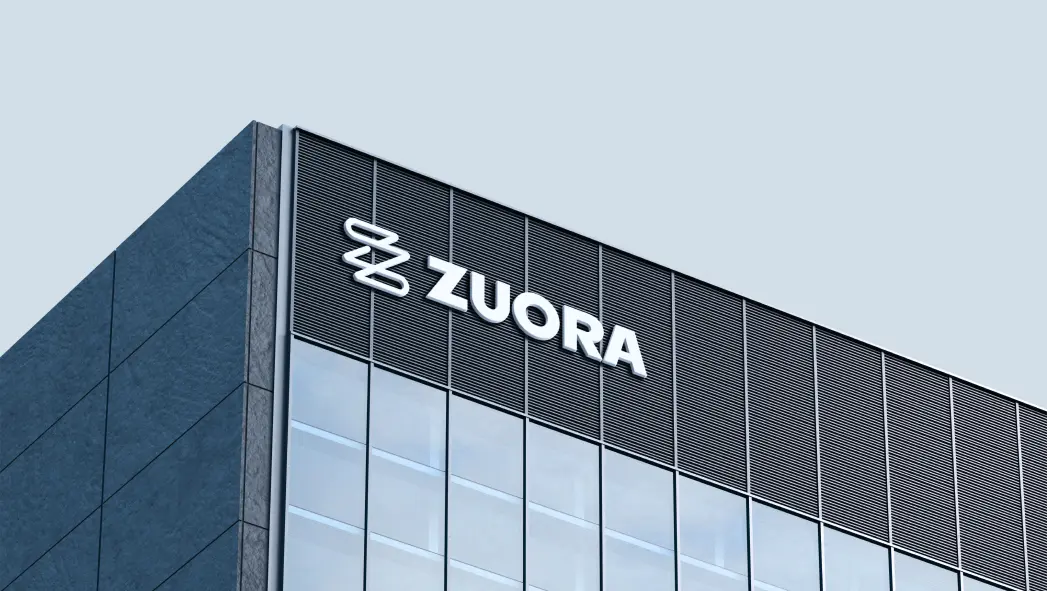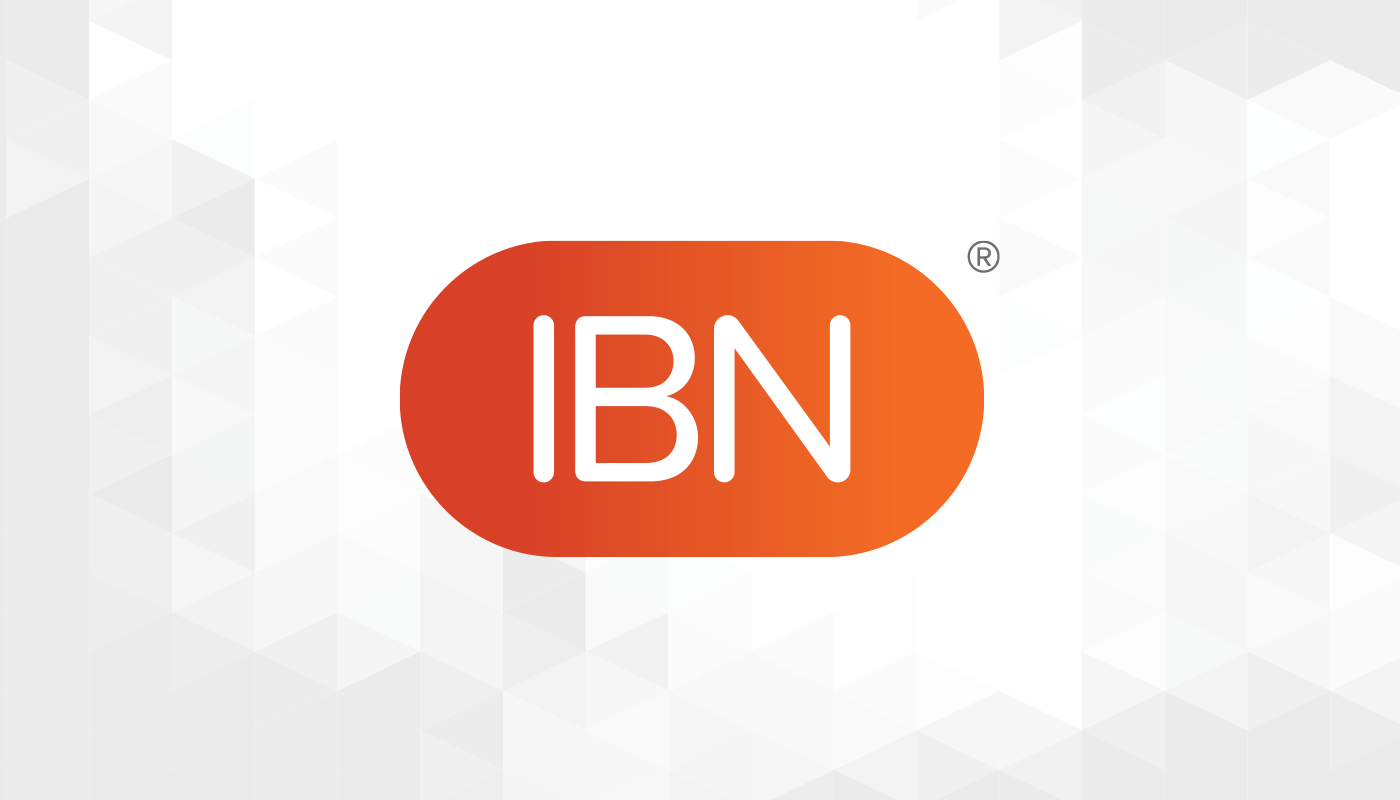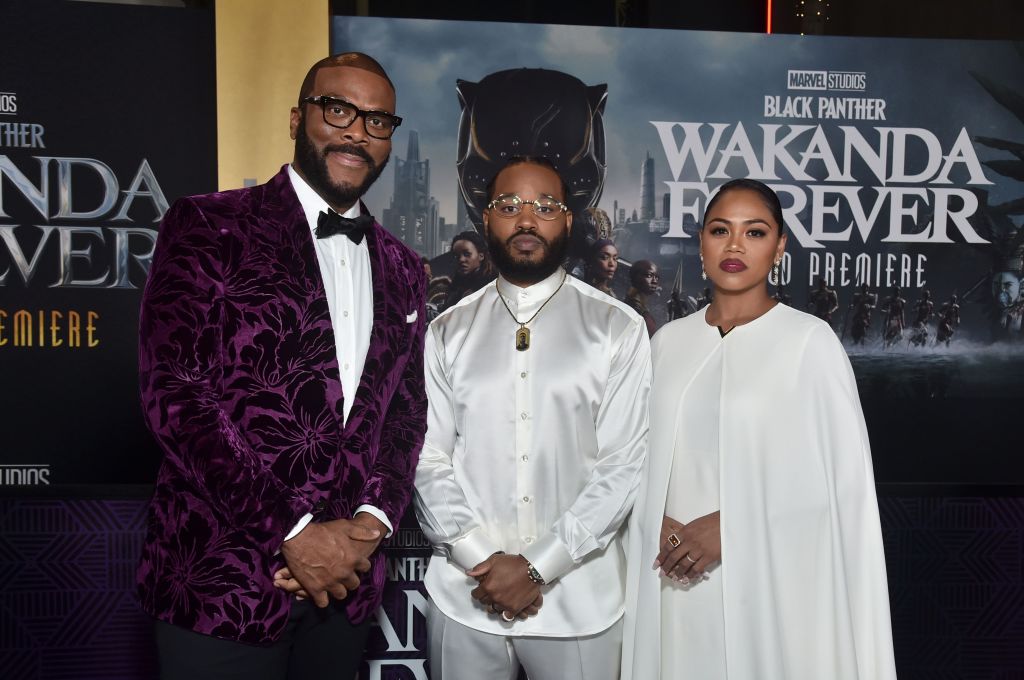Disney-owned shows originating from Hudson Square
“Get Up”
“First Take”
“Unsportsmanlike”
“The View”
“Live with Kelly and Mark”
“Good Morning America”
“Tamron Hall”
The conventional wisdom in enterprise technology suggests waiting for multi-year ERP transformations to complete before modernizing adjacent systems. Why complicate an already complex migration with additional integrations? 24 Hour Fitness threw that playbook out the window – and the results are transformative. The fitness giant, operating 249 clubs across nine states with nearly 4 million […]

The conventional wisdom in enterprise technology suggests waiting for multi-year ERP transformations to complete before modernizing adjacent systems. Why complicate an already complex migration with additional integrations? 24 Hour Fitness threw that playbook out the window – and the results are transformative.
The fitness giant, operating 249 clubs across nine states with nearly 4 million members, challenged the “wait-and-see” approach by implementing Zuora’s monetization platform while maintaining complete flexibility for their ERP strategy.
Picture running a fitness empire where billing cycles take six days every month. For 24 Hour Fitness, this wasn’t just operational friction – it was a strategic constraint limiting market responsiveness and cash flow optimization.
Their existing billing infrastructure was deeply intertwined with legacy systems, making modernization seem dependent on broader ERP transformation timelines. New product launches required significant investment and months of development time, creating barriers to innovation.
Katie Healon, Senior Director of Treasury and Payment Processing at 24 Hour Fitness, initially harbored natural skepticism about moving from a “stable” legacy system. But analysis revealed that staying put carried greater risks – missed opportunities, competitive disadvantage, and constrained cash flow management.
Zuora’s ERP-agnostic integration framework provided 24 Hour Fitness with a solution that complemented existing systems while preserving future flexibility. This approach recognized a fundamental truth: transformation doesn’t have to be all-or-nothing.
The implementation delivered immediate results. 24 Hour Fitness transitioned from six-day monthly billing cycles to daily billing capability – unlocking significant cash flow advantages and unprecedented flexibility in managing subscription lifecycles.
The transformation eliminated the investment barrier for new product launches. Where previously launching new membership tiers required extensive custom development, Zuora’s flexible billing software supports any mix of recurring, usage-based, one-time and hybrid pricing models.
Traditional order-to-cash automation can take 3+ years to implement as part of larger cloud ERP transformations, often leaving systems inflexible despite migration. By implementing a purpose-built monetization platform alongside existing systems, 24 Hour Fitness gained capabilities nearly impossible within traditional ERP frameworks.
The company’s approach demonstrates how modern billing software can complement existing ERPs to alleviate manual work and custom development complexity. Rather than waiting for broader transformation completion, they achieved immediate operational efficiency while positioning for scale regardless of future strategy.
In today’s market, speed to market determines competitive success. Healon noted that 24 Hour Fitness constantly explores flexibility in pricing structures, billing cycles, and payment methods. The COVID-19 pandemic accelerated the need for subscription offering flexibility.
Daily billing capability proved particularly valuable during pandemic recovery. The company emphasizes that the best way to engage fitness customers is getting them to work out. Daily billing cycles enabled responsive membership management when engagement patterns changed dramatically.
The transformation offers key insights for enterprise leaders facing ERP migration timelines: parallel modernization works, cash flow impact is immediate, innovation barriers fall, and integration flexibility preserves options.
What this means for ERP Insiders
Prioritize cash flow optimization during migration windows. The 24 Hour Fitness transformation from six-day to daily billing cycles demonstrates that cash flow optimization can’t wait for ERP completion. Companies implementing Zuora’s order-to-cash solutions typically see improvements in Days Sales Outstanding (DSO) and customer satisfaction metrics. With Zuora’s ability to scale billing for high-volume transactions and easily process 300K+ invoices per hour, tech leaders should evaluate subscription billing implementations that can deliver immediate working capital improvements while ERP migrations progress. The quantifiable impact: moving from monthly to daily billing cycles can improve cash flow by 15-30 days, representing millions in working capital for large subscription businesses.
Deploy ERP-agnostic integrations to preserve future flexibility. 24 Hour Fitness’s success stems from choosing technology that doesn’t lock them into specific ERP vendor roadmaps. Zuora’s native integrations with major ERPs including NetSuite, Workday, and SAP enable seamless data flow between systems while providing audit-ready financial data for different stages of order-to-cash. Tech leaders should implement API-driven architectures with microservices and REST APIs that simplify data exchange between multiple platforms, reducing the risk of integration failures. This approach ensures billing modernization investments remain valuable regardless of future ERP decisions, with customers like Sage reporting 32% subscription growth after implementation.
Eliminate innovation bottlenecks with flexible billing architectures. The investment barrier that 24 Hour Fitness eliminated for new product launches represents a common constraint in traditional ERP-dependent billing systems. Zuora’s Extension Studio and Integration Hub allow organizations to create custom solutions and quickly adapt to evolving business needs, with over 50 pricing models supported out-of-the-box. Companies like NCR reduced implementation time from months to weeks, freeing up at least five FTEs worth of work and enabling previously unavailable metrics like Monthly Recurring Revenue (MRR). Tech leaders should implement billing platforms that support rapid product iteration and pricing experimentation, enabling faster market response during the critical years when ERP transformations limit other technology initiatives.
By DAVID KLEPPER WASHINGTON (AP) — The phone rings. It’s the secretary of state calling. Or is it? For Washington insiders, seeing and hearing is no longer believing, thanks to a spate of recent incidents involving deepfakes impersonating top officials in President Donald Trump’s administration. Digital fakes are coming for corporate America, too, as criminal […]

By DAVID KLEPPER
WASHINGTON (AP) — The phone rings. It’s the secretary of state calling. Or is it?
For Washington insiders, seeing and hearing is no longer believing, thanks to a spate of recent incidents involving deepfakes impersonating top officials in President Donald Trump’s administration.
Digital fakes are coming for corporate America, too, as criminal gangs and hackers associated with adversaries including North Korea use synthetic video and audio to impersonate CEOs and low-level job candidates to gain access to critical systems or business secrets.
Thanks to advances in artificial intelligence, creating realistic deepfakes is easier than ever, causing security problems for governments, businesses and private individuals and making trust the most valuable currency of the digital age.
Responding to the challenge will require laws, better digital literacy and technical solutions that fight AI with more AI.
“As humans, we are remarkably susceptible to deception,” said Vijay Balasubramaniyan, CEO and founder of the tech firm Pindrop Security. But he believes solutions to the challenge of deepfakes may be within reach: “We are going to fight back.”

This summer, someone used AI to create a deepfake of Secretary of State Marco Rubio in an attempt to reach out to foreign ministers, a U.S. senator and a governor over text, voice mail and the Signal messaging app.
In May someone impersonated Trump’s chief of staff, Susie Wiles.
Another phony Rubio had popped up in a deepfake earlier this year, saying he wanted to cut off Ukraine’s access to Elon Musk’s Starlink internet service. Ukraine’s government later rebutted the false claim.
The national security implications are huge: People who think they’re chatting with Rubio or Wiles, for instance, might discuss sensitive information about diplomatic negotiations or military strategy.
“You’re either trying to extract sensitive secrets or competitive information or you’re going after access, to an email server or other sensitive network,” Kinny Chan, CEO of the cybersecurity firm QiD, said of the possible motivations.
Synthetic media can also aim to alter behavior. Last year, Democratic voters in New Hampshire received a robocall urging them not to vote in the state’s upcoming primary. The voice on the call sounded suspiciously like then-President Joe Biden but was actually created using AI.
Their ability to deceive makes AI deepfakes a potent weapon for foreign actors. Both Russia and China have used disinformation and propaganda directed at Americans as a way of undermining trust in democratic alliances and institutions.
Steven Kramer, the political consultant who admitted sending the fake Biden robocalls, said he wanted to send a message of the dangers deepfakes pose to the American political system. Kramer was acquitted last month of charges of voter suppression and impersonating a candidate.
“I did what I did for $500,” Kramer said. “Can you imagine what would happen if the Chinese government decided to do this?”
The greater availability and sophistication of the programs mean deepfakes are increasingly used for corporate espionage and garden variety fraud.
“The financial industry is right in the crosshairs,” said Jennifer Ewbank, a former deputy director of the CIA who worked on cybersecurity and digital threats. “Even individuals who know each other have been convinced to transfer vast sums of money.”
In the context of corporate espionage, they can be used to impersonate CEOs asking employees to hand over passwords or routing numbers.
Deepfakes can also allow scammers to apply for jobs — and even do them — under an assumed or fake identity. For some this is a way to access sensitive networks, to steal secrets or to install ransomware. Others just want the work and may be working a few similar jobs at different companies at the same time.
PRESS RELEASE Published July 28, 2025 SEGG Media (NASDAQ: SEGG, LTRYW), a technology company at the intersection of sports, entertainment and gaming, announced that Lottery.com and Sports.com-sponsored drivers Callum Ilott, Louis Foster and Sebastian Murray will compete at the Java House Grand Prix of Monterey at WeatherTech Raceway Laguna Seca. Foster, driving the #45 Droplight […]

PRESS RELEASE
Published July 28, 2025

SEGG Media (NASDAQ: SEGG, LTRYW), a technology company at the intersection of sports, entertainment and gaming, announced that Lottery.com and Sports.com-sponsored drivers Callum Ilott, Louis Foster and Sebastian Murray will compete at the Java House Grand Prix of Monterey at WeatherTech Raceway Laguna Seca. Foster, driving the #45 Droplight Honda for Rahal Letterman Lanigan Racing, enters the event with an average starting position of 8.4 over the last five races and aims to convert his strong qualifying pace into points. Ilott returns to the circuit where he secured his career-best IndyCar finish of P5 in 2023, while Murray makes his comeback to INDY NXT after being medically cleared following a crash at Mid-Ohio. SEGG Media leadership will be on-site to advance its Young Drivers Academy Program as part of its long-term commitment to developing elite racing talent across INDYCAR and international series.
To view the full press release, visit https://ibn.fm/m2lRS
About SEGG Media Corporation
SEGG Media is a global sports, entertainment and gaming group operating digital assets such as Sports.com and Lottery.com. Focused on immersive fan engagement, ethical gaming and AI-driven live experiences, SEGG Media is redefining how global audiences interact with the content they love.
NOTE TO INVESTORS:?The latest news and updates relating to SEGG are available in the company’s newsroom at http://ibn.fm/SEGG
About TinyGems
TinyGems is a specialized communications platform with a focus on innovative small-cap and mid-cap companies with bright futures and huge potential. It is one of 70+ brands within the Dynamic Brand Portfolio @ IBN that delivers: (1) access to a vast network of wire solutions via InvestorWire to efficiently and effectively reach a myriad of target markets, demographics and diverse industries; (2) article and editorial syndication to 5,000+ outlets; (3) enhanced press release enhancement to ensure maximum impact; (4) social media distribution via IBN to millions of social media followers; and (5) a full array of tailored corporate communications solutions. With broad reach and a seasoned team of contributing journalists and writers, TinyGems is uniquely positioned to best serve private and public companies that want to reach a wide audience of investors, influencers, consumers, journalists and the general public. By cutting through the overload of information in today’s market, TinyGems brings its clients unparalleled recognition and brand awareness. TinyGems is where breaking news, insightful content and actionable information converge.
To receive SMS alerts from TinyGems, text “Gems” to 888-902-4192 (U.S. Mobile Phones Only)
For more information, please visit https://www.TinyGems.com
Please see full terms of use and disclaimers on the TinyGems website applicable to all content provided by TinyGems, wherever published or re-published: https://www.TinyGems.com/Disclaimer
TinyGems
Austin, Texas
www.TinyGems.com
512.354.7000 Office
Editor@TinyGems.com
TinyGems is powered by IBN
COMTEX_467628603/2801/2025-07-28T13:24:02
Boise State Esports is entering a new era – one built on the foundation of eight years of innovation, growth and competitive excellence. The program is officially graduating from the College of Innovation and Design to become part of Boise State Athletics. What began as a grassroots effort is now a nationally recognized powerhouse – […]


Boise State Esports is entering a new era – one built on the foundation of eight years of innovation, growth and competitive excellence. The program is officially graduating from the College of Innovation and Design to become part of Boise State Athletics. What began as a grassroots effort is now a nationally recognized powerhouse – poised to expand its reach, deepen its impact and create even more opportunities for student-athletes in the years ahead.

It all started in 2017, and in the most humble of spaces: a classroom. But it was never a small idea. The program was born from the vision of Chris “Doc” Haskell – also nicknamed the “Grandfather of Esports” – and backed by the innovation-focused spirit of the College of Innovation and Design.
Haskell joined forces with Brett Shelton, a professor of educational technology to explore the possibilities of competitive gaming in higher education. Together, they pitched the idea to the College of Innovation and Design. Gordon Jones, then-dean of the college saw the potential immediately – a program true to the college’s mission of investing in the future and building from bold ideas.
With the college’s support, the program launched under the Department of Educational Technology, but transitioned fully to the College of Innovation and Design in 2018, just one year after its founding. The program’s physical journey mirrored its growth. From a shared computer lab in the Education Building, it moved to a temporary home on the second floor of Albertsons Library. Then, in 2019, construction was completed on the now-iconic Boise State Esports Arena.

The downtown arena was originally a shared space with the Venture College. But during the COVID-19 pandemic, the Venture College shifted to virtual operations and the Esports program expanded to take over the entire arena – marking another key milestone in its growth.
Over the past eight years, Boise State Esports has grown into one of the winningest esports programs in the country. With more than 1,500 competitive matches under its belt, the program boasts multiple national titles, dozens of conference championships and a global reputation for excellence.

The College of Innovation and Design has been more than a host – it has been an incubator and accelerator for the esports program. From the very beginning, the college offered the program a home, the flexibility to grow and access to the kind of support needed to thrive in uncharted territory.
In 2017, collegiate esports was still a new idea. Boise State was one of the first universities in the country to take the leap, and the college believed in that vision and invested early. Their support allowed the program to experiment, evolve and ultimately establish stability. The addition of funding from Idaho Central Credit Union allowed the program to begin offering scholarships, creating access for more students to participate.
Today, many universities are trying to replicate what Boise State built. But the College of Innovation and Design was there first – acting as the launchpad for what has become a nationally renowned program. The college’s history of fostering successful initiatives, such as Games, Interactive Media, and Mobile Technology, Human-Environment Systems, and Leadership Certificates, is part of what makes the College of Innovation and Design special. Esports is now the first non-credit-bearing program to successfully “graduate” – a major milestone for the college.
In the past year, the esports program has received institutional support from the president’s office and expanded its professional staff, further cementing its place as a core part of Boise State’s innovation ecosystem.
Tyler Perry played a hand in Ryan Coogler securing a groundbreaking deal. Award-winning director Coogler released “Sinners” in theaters on April 18. According to Forbes, the horror film, which had a $90 million production budget and featured Michael B. Jordan, Hailee Steinfeld, and Miles Caton, garnered $365.9 million worldwide. The film marked a reset for […]

Tyler Perry played a hand in Ryan Coogler securing a groundbreaking deal.
Award-winning director Coogler released “Sinners” in theaters on April 18. According to Forbes, the horror film, which had a $90 million production budget and featured Michael B. Jordan, Hailee Steinfeld, and Miles Caton, garnered $365.9 million worldwide. The film marked a reset for Coogler, who previously worked on sequels for “Black Panther” and “Creed.”

Beyond the plot and visual storytelling of “Sinners,” Coogler also made headlines for the business deal he secured for the film with Warner Bros. The New York Times reports he was given a portion of gross ticket sales before the studio takes its cut, an arrangement that was more common in the past for prominent stars and directors. As AFROTECH™ previously reported, Coogler will also secure final cut rights (removing the studio’s final say in certain editing and directing choices) as well as full ownership of the film in 25 years. Additionally, he earned a percentage of “Sinners’” box office return immediately when it was released. The deal could reportedly earn Coogler millions for generations in the future.
What’s more, Perry reportedly played a key role in encouraging Coogler to take this approach with his film. Perry himself owns the intellectual property of his projects, which include over 1,200 episodes of television, 22 feature films, and at least 24 stage plays, per BET.
“Everybody’s talking about the ‘Sinners’ deal. He got this amazing deal. Listen, I called that brother up, as I did a lot of them, I called him up after ‘Black Panther’ and I said, ‘Listen, here is how you do it,’” Perry shared on the “Den of Kings” podcast. “The deal that he has, my first movie, it’ll be 20 years this year from ‘Diary of a Mad Black Woman.’ I called him up and said, ‘Here is how you do that deal.’ And to see that they were able to pull it off. I applaud him, man. I’m excited for him because that’s what it’s about. Holding on to the ownership.”
One of ESPN’s first visitors to its new studios for flagship programs “Get Up” and “First Take”? That would be Whoopi Goldberg. Turns out, one of the hosts of “The View” is a big sports fan, and her show tapes just down the hall from ESPN’s morning shows at Disney’s new Manhattan digs. In the […]

One of ESPN’s first visitors to its new studios for flagship programs “Get Up” and “First Take”? That would be Whoopi Goldberg. Turns out, one of the hosts of “The View” is a big sports fan, and her show tapes just down the hall from ESPN’s morning shows at Disney’s new Manhattan digs.
In the basement of the new Hudson Square building, near SoHo in Lower Manhattan, you can find studios for “First Take,” “Get Up,” “Unsportsmanlike,” “The View,” “Live with Kelly and Mark,” “Tamron Hall” and “Good Morning America” — the first time Disney united the ESPN and ABC live shows under one roof.
ESPN vacated its Seaport Studios NYC home earlier in 2025 after seven years. “Get Up” debuted from its new studio on June 9, and “First Take” followed from the studio next door on June 23. The Disney side departed its uptown offices and studios slightly earlier, with “The View” its first studio show to broadcast from the new home.
“There’s this new level of integration that comes from being within a Disney building like that,” said Mike Foss, ESPN senior vice president, studio and entertainment. “The first month has been exceptional, but we’re really only beginning to tap into the potential of that space, which is really exciting.” Foss is a 2025 SBJ Forty Under 40 honoree.
“Get Up”
“First Take”
“Unsportsmanlike”
“The View”
“Live with Kelly and Mark”
“Good Morning America”
“Tamron Hall”
The hope is for more cross-pollination between ESPN and Disney talent on-air, especially with the proximity of the studios. Joe Buck and Malika Andrews have appeared on “Good Morning America,” and other ESPN shows are jockeying for guest appearances at Disney’s new New York headquarters, officially named the Robert A. Iger building.
In less than two months since its opening, “Sunday Night Baseball: Statcast Edition,” “NBA Today” and “ESPN FC” can all claim to have aired from 7 Hudson.
“One of the goals when we opened Seaport was to make it a true content factory,” said Chris Calcinari, ESPN senior vice president of content operations, noting that over the years shows including “SportsCenter,” “NFL Countdown” and “NBA Today” all broadcast from the downtown studios.
“Our goal is just to create the same environment at 7 Hudson, where all those shows get excited to come to New York. I’m really looking forward to the fall and seeing what else we can do there,” said Calcinari.
Much of the 19-story, 1.2 million-square-foot building is glass, bringing in plenty of natural light. A cafeteria and common space houses a Starbucks, and that area can also be used to host live studio shows. 7 Hudson also has a large screening room and a company store.
Disney signed a 99-year, $650 million lease for the space in 2018. Four existing structures were demolished, making way for Disney’s complex, which now takes up an entire city block.
On a Thursday morning in July, the ladies of “The View” walked past the studio for “Get Up” heading to the green room. According to folks at ESPN, it’s not uncommon to see guests and talent from the ABC shows, as green rooms are shared.
“You can’t plan for that stuff or design for that stuff, but the fact that you have all these elements together, you’re inviting this chemistry to just manifest organically,” said Foss.
A lot of ESPN talent tends to take time off in July, which typically is a slower sports month. The day Sports Business Journal was on set, Dan Graziano filled in for Mike Greenberg on “Get Up,” and Courtney Cronin subbed in for the “First Take” crew. NBA talk was heavy in both shows, with topics including Cooper Flagg’s Summer League debut (and the price of a ticket), and Nikola Jokic’s future.
The studio for “Get Up” pays homage to New York, with memorabilia from the subway scattered throughout. Of course, Greenberg’s Northwestern football jersey is framed.
“You step into both of those studios now, and they really embody and reflect the shows,” said Foss. “We’ve had a really nice runway to build and prepare for this move, and you really see it manifest in the finished set pieces.”
Calcinari concurred, saying the “Get Up” studio “screams New York,” adding, “We’re really trying to make that studio look like New York, with subway tiles and the LEDs displaying scenes of New York City.”
“First Take” has three distinct looks and utilizes 360-degree camera angles while shooting, making it more difficult for visitors to observe filming than “Get Up.”
Those looks include the main “First Take” desk area, which is shot in the round with a large LED wall behind them to support scenic, graphic or video elements. Then there’s the South Wall area, which the show used for “NBA Today” during the NBA Draft. That spot also has a large LED wall. The third is the West Wall, which has an LED wall that talent can either be seated or stand in front of.
While Seaport had been a good home for ESPN, the company had essentially maxed out its possibilities, and got major upgrades at Hudson Square. It also no longer has to compete with rooftop concerts at Pier 17.
“We’re in a much-improved technical facility,” said Calcinari, adding that the studio can do UHD (ultra high definition) and HDR (high dynamic range).
Both ESPN studios are the same size (2,100 square feet), and slightly smaller than Seaport. Both heavily use LED, a difference from Seaport. The studio for “Get Up” kept essentially the same design and look as its old home, but has an LED floor and a curved LED wall with a touch screen. The use of LED is the biggest change from Seaport, with both studios essentially LED screens all the way around, moving from the natural scenery to LED.
Each show uses six cameras with a mix of robo, jib and handheld. The studios also utilize a remote integration production model, meaning the control rooms and production teams are in Bristol.
“The core guts of executing the show [are] still back in Bristol,” said Calcinari.
“From a communication standpoint, from a collaboration standpoint, both from the operation side and the content side and production side, because it’s a Disney building — the integration is just so much stronger and more aligned,” said Foss. “There were quirks that came with working out of Seaport — they were lovable quirks, but there were some hiccups and challenges to that.”
Added Foss: “Having all that streamlined, being able to have quick, immediate communication and infrastructure between Bristol and 7 Hudson, again, it’s [going to] make it so much sharper and more efficient in the way that we produce both of those shows, and other shows that obviously are going to come from there.”
The Hudson studios allow easier communication with ESPN headquarters in Bristol, where the bulk of the shows are still produced. According to Foss, a satellite studio such as Seaport existed “on its own island.”
“You [were] deprived of a lot of the other things that shows that are based in Bristol take advantage of all the time,” said Foss, pointing to ease in communicating with researchers, coordinating with talent bookers or bumping into Michael Strahan on your way to the cafeteria.
“There’s these intangible things that come from working in a bigger production space with other production groups and units that naturally afford you to elevate your own game and productions,” said Foss.
“There’s these intangible things that come from working in a bigger production space with other production groups and units that naturally afford you to elevate your own game and productions.”
— Mike Foss, ESPN senior vice president, studio and entertainment
There aren’t concrete plans to shift further production from Bristol to the new studios, but having the New York space does create ease in attracting talent, and also the benefit of being near major events, such as the FIFA Club World Cup earlier this month.
“It’s not so much we’re shifting more or all shows into that space, but just having the ability to make these timely strategic decisions and have a space that can accommodate [at] the snap of a finger, that’s a huge benefit,” said Foss.
The connected fitness industry has spent the past decade digitizing traditional gym experiences, streaming classes, tracking basic metrics, and building content libraries. But a new wave of AI-driven workouts is challenging this entire model with something that can’t easily be replicated: artificial intelligence that actually thinks during your training session. amp, a US-based fitness innovation […]

The connected fitness industry has spent the past decade digitizing traditional gym experiences, streaming classes, tracking basic metrics, and building content libraries. But a new wave of AI-driven workouts is challenging this entire model with something that can’t easily be replicated: artificial intelligence that actually thinks during your training session.
amp, a US-based fitness innovation startup, is launching what may be the industry’s most sophisticated AI Coach to beta users this month, with plans for broader deployment throughout 2025. Unlike existing smart home gym platforms that rely on pre-recorded content and static programming, amp’s adaptive fitness technology creates workout plans that evolve in real-time based on thousands of performance indicators.

Building effective AI-driven workouts requires solving problems that don’t exist in other AI applications. Unlike recommendation engines or chatbots, fitness AI must understand the dynamic relationship between human physiology and performance adaptation – variables that shift constantly based on sleep, stress, recovery, and dozens of other factors.
“Traditional fitness platforms treat performance fluctuations as noise to be filtered out,” explains a spokesperson for amp. “We treat them as essential metrics that inform better training decisions.”
When you complete an exercise, amp doesn’t just record weight and repetitions. The adaptive fitness technology analyzes movement velocity, range of motion consistency, rest period duration, and how these metrics compare to your historical patterns. This multidimensional approach creates AI-driven workouts that understand not only what you accomplished, but how efficiently you accomplished it.
Most fitness tracking operates reactively – documenting what happened after exercises are completed. amp’s AI Coach takes a predictive approach, using machine learning models to anticipate what your body needs next based on subtle performance indicators that precede conscious fatigue recognition.
The technical architecture processes multiple data streams simultaneously through computer vision systems that track movement patterns via smartphone cameras, electromagnetic sensors that monitor cable tension and velocity, and accelerometers that capture micro-movements indicating form breakdown or readiness for progression.
This creates feedback loops that operate on millisecond timescales, enabling the adaptive fitness technology to modify resistance patterns during exercises rather than between them. If movement velocity decreases beyond optimal ranges, the AI Coach can reduce load before form deterioration compromises safety or training effectiveness.
The sophistication of amp’s approach lies in its neural networks optimized for time-series biomechanical data. Unlike rule-based algorithms that follow predetermined decision trees, these models develop an increasingly nuanced understanding of individual user physiology over time.
The AI-driven workouts platform maintains detailed performance models across different exercises, recovery states, and environmental factors. When users begin sessions, the system already has predictive frameworks in place that account for likely performance based on training history, sleep data from connected wearables, and circadian rhythm patterns.
These predictions enable proactive programming adjustments. The adaptive fitness technology might pre-load lighter resistances if recovery indicators suggest suboptimal readiness, or recommend power-focused exercises when biomarkers indicate peak performance states.

amp combines this technical sophistication with coaching knowledge from fitness industry experts like Terry Crews, Chris Heria, and Kinga Strogoff. Rather than simply streaming pre-recorded content, the platform uses what they term “AI Avatar technology” to apply expert coaching principles to individual user situations in real-time.
The AI-driven workouts system understands the biomechanical rationale behind coaching decisions and adapts expert guidance to specific user capabilities and limitations. When Terry Crews emphasizes explosive movement patterns for power development, the adaptive fitness technology identifies optimal moments for these cues based on current user strength levels and movement quality.
The effectiveness of AI-driven workouts depends heavily on hardware capable of executing real-time decisions. amp’s electromagnetic resistance system can modify load patterns smoothly during individual repetitions – a capability that traditional mechanical systems cannot match.
Three distinct resistance modes demonstrate this integration: Band Mode simulates progressive resistance band behavior with real-time curve modifications based on user performance. Eccentric Mode adds load during lowering phases while modulating this additional resistance based on fatigue indicators. Fixed Mode maintains consistent challenge throughout movements but adjusts baseline resistance automatically based on form quality metrics.
This hardware-software integration enables adaptive workouts that feel responsive rather than predetermined, creating training experiences that evolve with user capability in ways that static programming cannot achieve.
amp’s approach represents a fundamental shift from content-driven platforms to intelligence-driven training. While competitors can hire celebrity instructors or improve video production quality, they cannot easily replicate machine learning systems that understand individual user physiology without significant infrastructure investment.
The company’s $1,795 device price point, combined with $23 monthly subscriptions supporting up to 15 household members, disrupts traditional smart fitness economics. Unlike content platforms where additional users don’t significantly enhance core experiences, amp’s AI-driven workouts become more valuable as they learn from diverse user patterns within the same household.
As amp continues to expand AI Coach capabilities throughout 2025, its adaptive fitness technology suggests a future where workout equipment genuinely understands user goals, limitations, and daily variations. This moves beyond tracking what happened to predicting what should happen next – a distinction that may define the next generation of fitness technology.
The engineering principles behind amp’s AI-driven workouts could eventually inform everything from physical therapy protocols to athletic performance optimization, demonstrating how sophisticated AI applications can emerge from solving real human problems rather than purely technical challenges. For an industry built on helping people achieve consistent progress, intelligence that adapts to human variability rather than ignoring it may be the most important innovation of all.
Prices and availability are accurate as of the time of publication and are subject to change without notice. Please check the retailer’s website for the most up-to-date pricing information.
VentureBeat newsroom and editorial staff were not involved in the creation of this content.


Why a rising mid-major power with an NCAA Tournament team opted out of revenue-sharing — and advertised it


New 'Bosch' spin


EA Sports College Football 26 review – They got us in the first half, not gonna lie


CAREGD Trademark Hits the Streets for Mental Health Month


Volleyball Releases 2025 Schedule – Niagara University Athletics


Will Giannis DEPART Milwaukee⁉️ + How signing Turner & waiving Dame impacts the Bucks | NBA Today


Adapti, Inc. (OTC


New NCAA historical database provides wealth of information on championships


Buford DB Tyriq Green Commits to Georgia


FREE AGENCY BREAKDOWN 🚨 What moves can the 76ers make? 🤔 | NBA Today